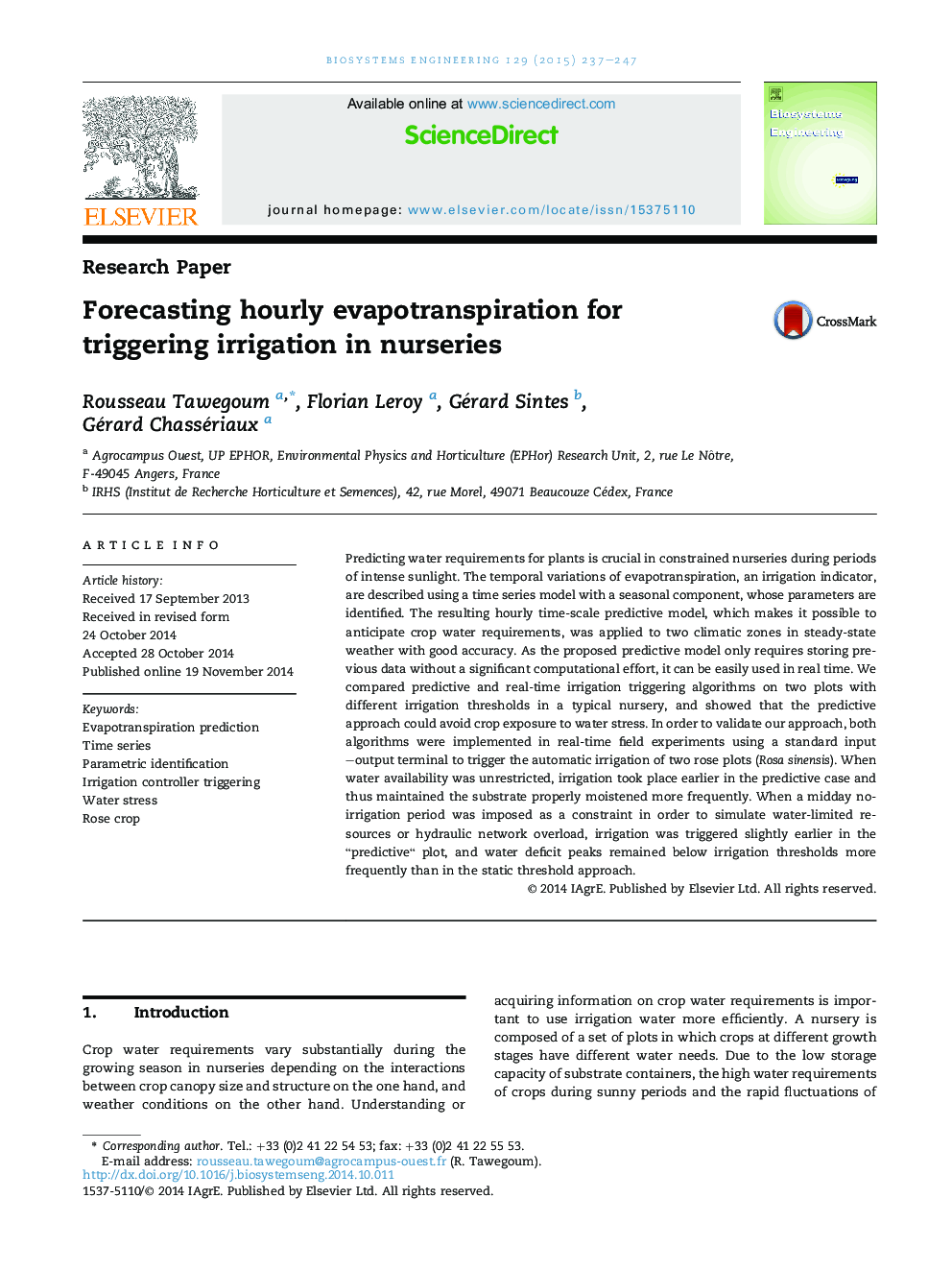| Article ID | Journal | Published Year | Pages | File Type |
|---|---|---|---|---|
| 1711067 | Biosystems Engineering | 2015 | 11 Pages |
•Accurate prediction of hourly evapotranspiration by using time-series analysis.•Anticipate crop water requirements.•Crop frequently maintained in a better water status with predictive triggering.•Improve plant water management in nurseries.
Predicting water requirements for plants is crucial in constrained nurseries during periods of intense sunlight. The temporal variations of evapotranspiration, an irrigation indicator, are described using a time series model with a seasonal component, whose parameters are identified. The resulting hourly time-scale predictive model, which makes it possible to anticipate crop water requirements, was applied to two climatic zones in steady-state weather with good accuracy. As the proposed predictive model only requires storing previous data without a significant computational effort, it can be easily used in real time. We compared predictive and real-time irrigation triggering algorithms on two plots with different irrigation thresholds in a typical nursery, and showed that the predictive approach could avoid crop exposure to water stress. In order to validate our approach, both algorithms were implemented in real-time field experiments using a standard input–output terminal to trigger the automatic irrigation of two rose plots (Rosa sinensis). When water availability was unrestricted, irrigation took place earlier in the predictive case and thus maintained the substrate properly moistened more frequently. When a midday no-irrigation period was imposed as a constraint in order to simulate water-limited resources or hydraulic network overload, irrigation was triggered slightly earlier in the “predictive“ plot, and water deficit peaks remained below irrigation thresholds more frequently than in the static threshold approach.
